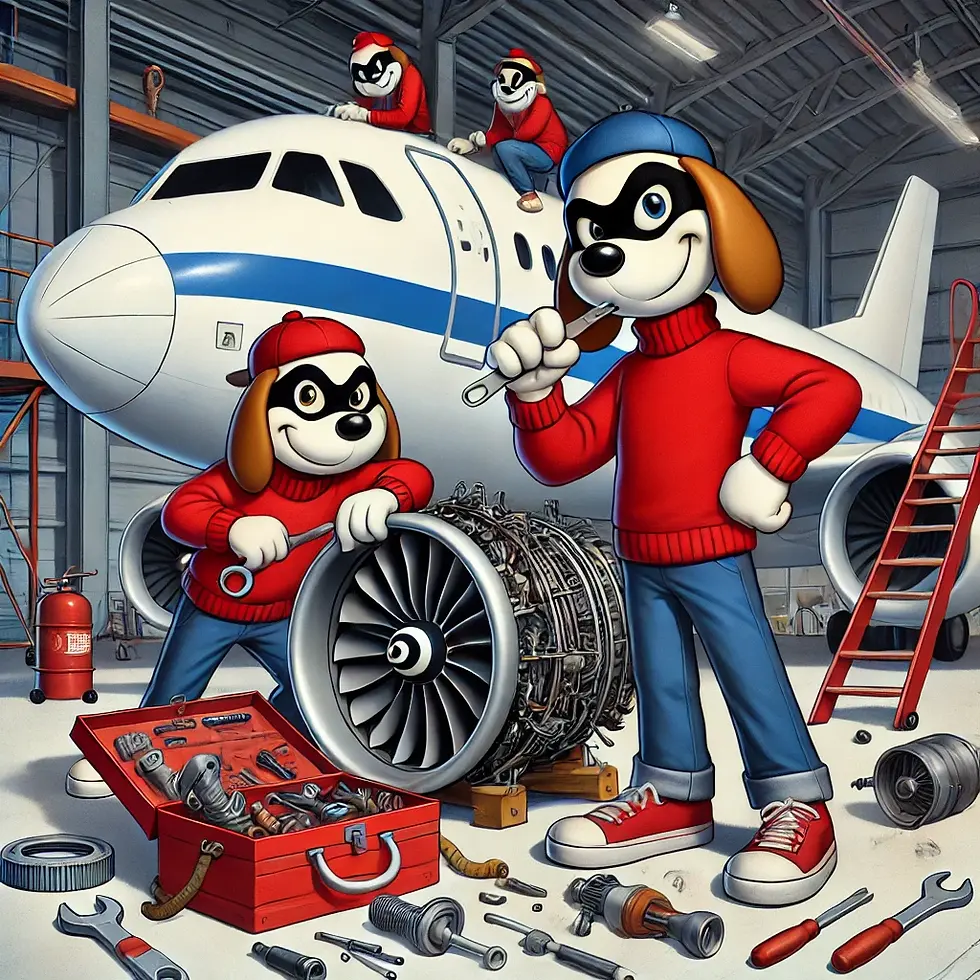Lean Manufacturing for Beginners
- Simone Intini

- Jan 5, 2022
- 3 min read
Updated: Dec 13, 2024
Hangars: where maintenance happens, where everything is quality and time critical. In modern Part145s, Lean Manufacturing tools are at least as important as aircraft maintenance tools: using those tools, can result in better working conditions, reduced maintenance LT, more efficient operations.
Lean Manufacturing originates from TPS (Toyota Production System), it’s a system based on complete elimination of any kind of waste, no matter if we are talking about time or material. It’s the light that guides modern production lines and shops towards new achievements in terms of production efficiency and product or service quality.

It is not always easy to adhere to the Lean Manufacturing culture and principles, especially when the working environment is small and full of ancient, bad habits; one of the most dangerous mindsets is “We’ve always done this way”, meaning that the old bad habits are the felt by the team as the best way to work, being satisfied with the status-quo and missing the surprising opportunities offered by a structured, planned and continuous improvement: we read a lot of times about Companies “...focusing on Continuous Improvement...”; what does it mean?
No production, maintenance or management process is perfect, and never will be: that’s why we have to Continuously adapt processes and people’s mindset, challenging the rock-solid habits to embrace change as an essential element for Improvement.
Change is necessary: we are required to be flexible, to better fulfill our Customer’s requirements and to tailor our Services; no matter if you are producing or servicing an Aircraft, focus is on waste reduction and improved efficiency.
Let’s go back to the beginning of the post: Hangar.
How can I use the space better? Am I storing the maintenance tools in the right place? Is there anything I can do to reduce internal and external LT and improve communication within and between the Teams? Do I have the Supply Chain processes under control? Is my ERP performing good? Do I have the correct set of metrics (KPIs)?
“Lean isn’t lean if it doesn’t involve everyone”, one said, and since Respect is a guiding principle of the Lean Manufacturing, change must come from the people, in an inclusive debate that brings ideas, directly from the shop. A bottom-up approach, one small change at a time, or in a Japanese word, Kaizen, that means something like “change for good”: everyone is responsible to find opportunities to improve performances, day by day, action by action. The above questions are answered by small but necessary actions taken directly by the employees and guided by management, in a gradual change of culture that seeks for mutual improvement opportunities, everywhere.
There are many Lean Manufacturing tools, some very easy to understand and apply, some others very complicated; I will just mention one, probably the most famous and used method: the so called 5S, where 5S stands for:
Sort - Eliminate what you don’t need
Set in Order - Organize the remaining
Shine - Clean and inspect
Standardize - To rule the above indications
Sustain - Periodically apply the rules for above

While it could appear easy to apply such rules to a manufacturing environment or a maintenance shop, it could appear less immediate to apply the above principles to a warehouse, full of old but still valuable parts.
Well, it’s easier than you think.
Let us do the dirt job for you: with the Horix Trust Consignment Program, we analyze your dusty stock and give you real figures about material value and sales opportunities.
We not only Sort, we turn your material into money, giving you back the added value you need.
Contact us today and ask for the Horix Trust Consignment Program: Easy, Trusted Process.
Lean Manufacturing for Beginners








Commentaires